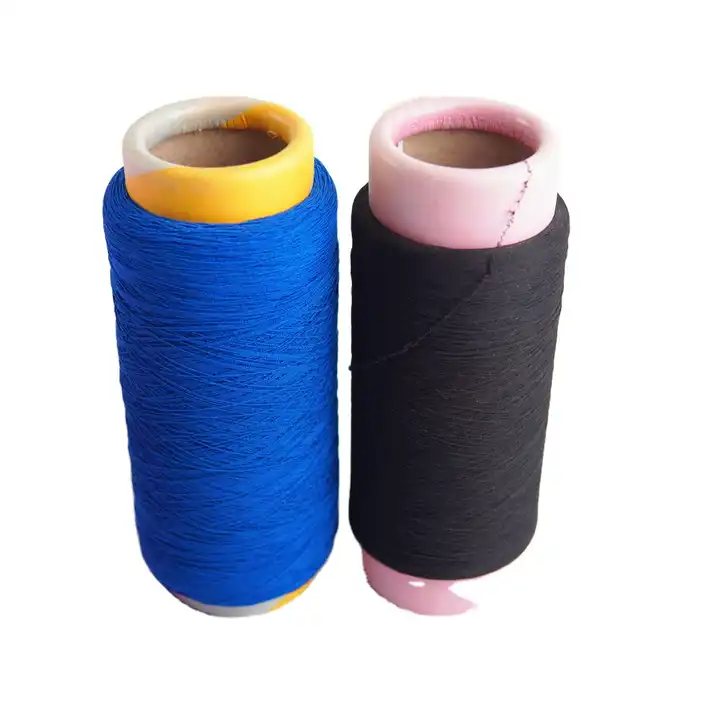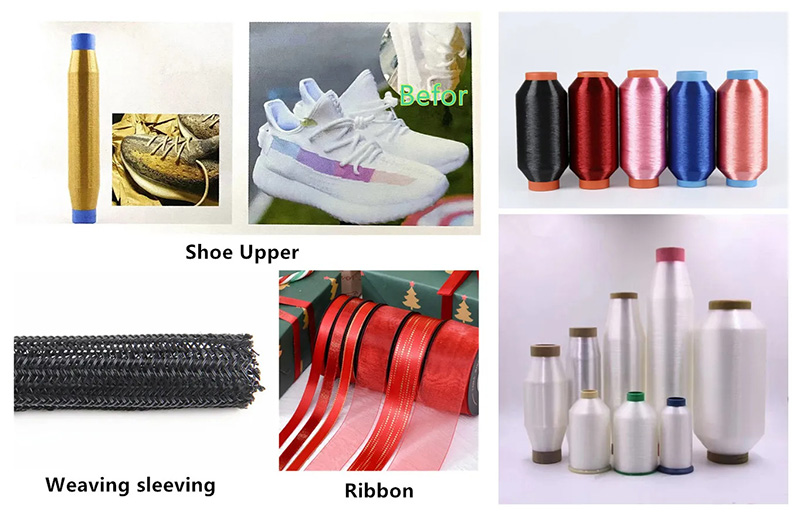Covering Yarn:High Quality Shoe Upper Yarn
2023-11-24
Covering yarn is a common textile processing method that wraps yarn on the surface of a fabric or coil to increase the thickness, softness and warmth of the fabric. The wrapping process can be applied to various textiles, such as cotton, linen, silk, wool, etc., among which cotton and wool are the most common.
The Characteristics of Covered Yarn
Light and soft: Yarn-covered fabrics usually use finer yarns, and with the improvement of processing technology, the fabrics are soft, light, highly comfortable, and feel good.
Rich colors: The unique dyeing process of yarn-covered fabrics makes the colors of the fabrics bright and long-lasting.
Strong durability: Due to the reinforced fiber coating, the yarn-covered fabric has high strength, good durability, and is not easy to deform or tear.
Good breathability: The covered yarn fabric has been specially treated to make it breathable and comfortable to wear.
Good warmth retention: Since natural fibers have excellent thermal insulation properties, using them as the inner core can effectively prevent heat loss, thereby improving the warmth retention effect of the product.
Good hygroscopicity and breathability: Since natural fiber has good hygroscopicity and breathability, using it as the inner core can effectively absorb and distribute human sweat, making it more comfortable to wear.
High strength and good durability: Because synthetic fibers are wear-resistant, not easily damaged, and have high strength, using them as outerwear can extend the service life of yarn-covered products.
Strong adaptability: Because the covered yarn has good elasticity, it is more suitable for making tight clothing and sportswear and other occasions that need to fit the body flexibly. In addition, it can also be used to make products in different fields such as home textiles and decorative fabrics.
In general, covered yarn is a high-end fabric with many advantages, but there are also certain disadvantages that need to be noted. For example, higher cost, high washing requirements and easy damage. Therefore, when using covered yarn fabrics, you need to choose according to the specific situation.

Process of Covering Yarn
Prepare the yarn: Select the desired yarn type and gauge and wind it onto the bobbin on the loom.
Weaving fabric: Using a loom to weave yarn into the desired fabric type and pattern.
Prepare the covering material: Select the required covering material, such as cotton, linen, silk, wool, etc., and cut it to the appropriate length and width.
Yarn wrapping: wrapping the yarn covering material on the surface of the fabric, which can be done by hand or machine.
Finishing and ironing: Finish and iron the yarn-wrapped fabric to make it flatter and smoother.
The function of covering yarn is not only to increase the thickness and softness of the fabric, but also to improve the warmth and durability of the fabric. In addition, covered yarn can also increase the beauty of the fabric, making it more suitable for use in high-end clothing and home furnishings.

Application of Covering Yarn
Covering yarn is a common textile processing method with a wide range of applications. In the medical field, gauze is used to make bandages and dressings, such as surgical gauze and cold compress gauze. These products are primarily used in surgeries and wound management in hospitals and clinics, as well as home first aid. The softness and breathability of the gauze can help protect the wound and avoid infection, while also promoting wound healing.
In addition to the medical field, covered yarn is also used to make various textiles, such as clothes, home textiles, and decorative fabrics. In terms of clothing, covered yarn can be used to make underwear, sportswear and tight clothing. In terms of home textiles, covered yarn can be used to make products such as bed sheets, quilt covers, and pillowcases. In terms of decorative fabrics, covered yarn can be used to make products such as curtains, carpets and wallpapers.
In addition, covered yarn can also be used to make some special products, such as thermal insulation clothing, firefighting clothing, and waterproof clothing. These products often need to have excellent thermal insulation, fireproofing and waterproofing properties, and covered yarn can meet these requirements.
When choosing a covering material, you need to consider its combination with the fabric and the desired effect. For example, cotton covered yarn is suitable for light, breathable fabrics, while wool covered yarn is more suitable for heavy, warm fabrics. In addition, the thickness and density of the covering yarn also need to be selected according to the type and use of the fabric.

In short, covering yarn is a common textile processing method that can increase the thickness, softness and warmth of the fabric, as well as improve its beauty and durability. When choosing yarn covering materials and processes, the type and purpose of the fabric need to be considered to ensure the best results.
 English
English 한국어
한국어 বাংলা ভাষার
বাংলা ভাষার हिन्दी
हिन्दी Türkçe
Türkçe русский
русский




